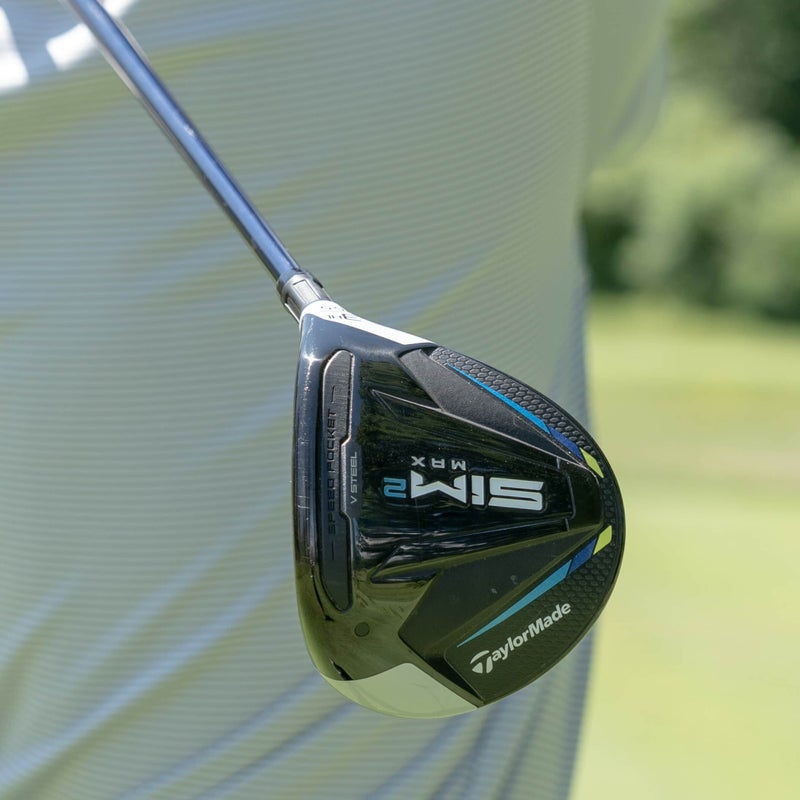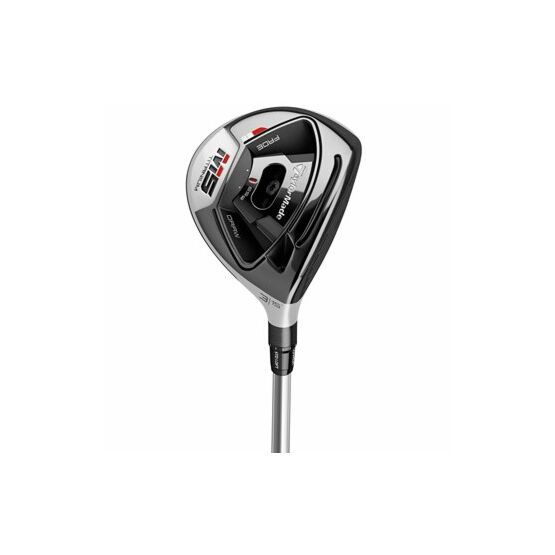-
{{link.label}}{{link.label}}
How to Choose a Fairway Wood - Buying Guide
On this page
Whether you’re looking for a trusty club off the tee or a club that’ll help you reach the green in two strokes on a par 5, the fairway wood will be your best friend. But you’d be surprised by how many times we get asked the question “which fairway wood do I need?”

To answer this question, and since we’d hate to leave any golfers behind when it comes to all you need to know about fairway woods, our caddies came up with a complete guide to help you find the right fairway wood for you.
This guide on how to choose a fairway wood will:
- Show you all you need to know about fairway woods
- Explore the differences between a fairway wood and a hybrid
- Provide suggestions based on skill level and playing tendencies
What are the important characteristics of fairway woods?
Before we go any further, let’s start things off by breaking down the most important characteristics of a fairway wood. These are the characteristics that you’ll need to consider when shopping for a fairway wood.
Loft
The loft refers to the face angle of your fairway wood in relation to the ground. Most commonly, fairway woods’ loft will sit between 15 and 21 degrees. In the case of the 3-wood loft, it’ll usually be close to an angle of 15 degrees, but it can be adjusted if your fairway wood is adjustable. (We’ll cover those).

Length
The length of your fairway wood will vary based on the type of fairway wood you’re hitting. A 3-wood will tend to have the longest length of shaft among all fairway woods. The general rule of thumb is that you take off an inch from the length of the shaft as the number of your club grows.
For example, a 3-wood will usually sit between 42 and 43 inches, while a 5-wood will sit between 41 and 42, and a 7-wood will tend to fall in the 40 to 41 inches bracket.
Shaft
Fairway woods’ shafts are very similar to drivers’ shafts. The only difference will stem from the length as fairway wood shafts are shorter. In terms of materials, most modern fairway woods will be equipped with a graphite shaft. These shafts will usually be available in a selection of flexes.
Material
The materials that makeup fairway woods are more varied than ever, yet the components making up the fairway woods of big brand manufacturers are mostly similar. As mentioned, graphite is popular for the shaft, titanium and aluminum have been known to be reliable and malleable, and carbon has been making a strong push to expand its presence beyond the body of the club head and into the club face.
Adjustability
Fairway woods’ adjustability is very similar to drivers since most modern models are miniature versions of their driver counterparts. Adjustable fairway woods will tend to feature an adjustable loft sleeve, and some will even feature an adjustable weight on the sole, along the crown, or under the face.
Spin
Spin levels are one of the important aspects to take into consideration when shopping for a fairway wood. Higher spin levels will be useful for golfers with a slower swing speed or golfers looking for strikes that will stop rapidly upon impact. Lower spin levels will be a favorite of players with fast swing speeds.
What are the different types of fairway woods?
As you probably realized by now, there are plenty of different fairway woods for you to add to your golf bag. Some are longer than others, while others will generate more spin and some will help you counter a slice, but each fairway wood is catered to help a specific type of golfer.

Now that you have a better understanding of what makes up fairway woods, it times to help you better understand their differences, starting with degrees and loft.
Degrees & loft
Most fairway woods will be identified by an odd number, starting from 3 all the way up to 11. That’s right, an 11-wood is a real golf club! The loft angle of your fairway wood will grow as the number on your club increases.
Basically put, a 3-wood will usually sit in the 15 to 18 degrees loft angle range, a 5-wood will find itself in the 18 to 21 degrees range, and a 7-wood will fall into the 21 to 24 range. If you’re using an adjustable fairway wood, the loft angle can always be adjusted.
What are they used for
Most commonly, fairway woods will be used to either tee off when using your driver is not the right play or when you’re trying to cover a lot of distance with a strike from the fairway. You can always try and use it out of the rough, but your ball will need to be in a perfect position.
Do fairway woods have any equivalents or substitutes?
You can’t replace them outright, but you can certainly find golf clubs that’ll provide similar performances. The closest club to your fairway wood is your driver, but unless you’re hitting off a tee, you’ll leave this one in the bag. Or should you? No really, hitting a driver off the deck is no small feat.
The most similar club to a fairway wood in terms of performance is the hybrid. The hybrid will have a higher ball flight and will produce more spin upon impact. While you can’t reproduce the exact same performance, you can turn your hybrid into a “miniature” fairway wood by lowering the loft angle and adding more weight to the front of the club face to reduce spin levels.
What’s the difference between a 3, 5, and 7-wood?
On a quick glance, you could believe that a 3, 5, and 7-wood all look the same, safe for a small difference in clubhead size. The truth is that while the differences between each one of them are minor, they have a massive impact on performance.
The higher loft angle of the 5 and 7-wood will provide a higher launch angle at impact and more spin upon hitting the ground. They’ll also be equipped with shorter shafts than the 3-wood. These shorter, more lofted clubs are perfect for golfers with slower swing speeds.
When should you use your fairway wood?
One of the greatest perks of the fairway wood is its versatility on the golf course. That’s right, whatever your preference may be, you can use your fairway wood with or without a tee when you’re hitting your first shot on a hole.

If you find yourself down in the alley and you want to cover a lot of distance, your fairway wood will be your go-to tool. Even when you’re hitting the ball off the ground with a fairway wood, you can be sure that it’ll produce plenty of distance.
What’s the difference between a hybrid club and fairway wood?
To put it simply, the difference between a fairway wood and a hybrid has a lot to do with launch angles, spin levels, ball control, and feel for the ball at impact. You can think of your fairway wood as the power tool and your hybrid as a precise screwdriver that allows you to be more accurate.
Fairway woods are designed to maximize distance and help shorten the course, especially on par 5s. Fairway woods can even be used as a substitute for your driver if you’re having issues or if the hole’s layout calls for something other than a driver.
On the other hand, hybrids are designed to deliver performances closer to those of irons, while providing the forgiving of fairway woods. Using a hybrid over a fairway wood, you’ll notice a massive difference in launch angle, distance carried, spin levels, and feel for the ball at impact.
Which fairway wood do you need?
The best fairway wood for you will need to cater to your needs on the course and will need to put you in comfort every time you pick up your club. Whether you’re looking for a quick fix to frustrating ball trajectories on the course, or simply for more power, there’s always a fairway wood for you.
Do you want to maximize your swing speed on impact?
Golfers looking to maximize their swing speeds with a fairway wood will need to find a club that caters to their needs. This means that for some golfers this will mean a lighter fairway wood, for others it will mean an adjustable fairway wood and for some, it will be a club with lower spin levels or launch angle.
Good fairway woods options for you to consider:
- Cobra Air-X Fairway Wood - $124.99
- TaylorMade M5 Fairway Wood - $119.99
- Callaway Rogue ST Max LS Fairway Wood - $184.99
Cobra Air-X Fairway Wood
The Cobra Air-X fairway wood is the perfect model to help golfers with slower swing speeds maximize distance on every strike. The Air-X is a lightweight fairway wood, complete with a decent level of offset near the hosel.

Simply put, it’s the perfect fairway wood for less-experienced golfers and it belongs in the category of most forgiving fairway woods.
Shop the Cobra Air-X Fairway Wood
TaylorMade M5 Fairway Wood
The TaylorMade M5 fairway wood is best suited for golfers who are looking for an adjustable club that will allow them to maximize the performance of their swing speed. The M5 fairway wood sports an adjustable weight mounted on a track on its sole and an adjustable loft sleeve on the hosel.

The M5 fairway wood is ideal for golfers who want the ability to personalize their golf club based on their swing speed on any given day. It’ll usually suit the game of more experienced players looking to take their game to the next level. TaylorMade fairway woods are reputed for their quality, and this one makes no exception to that rule.
Shop the TaylorMade M5 Fairway Wood
Callaway Rogue ST LS Fairway Wood
The Callaway Rogue ST Max LS fairway wood is sure to please golfers looking to limit spin levels of their fairway wood at impact. In the case of players looking for such a club, they’re most likely looking for a way to make the most of their swing speed and, ultimately, generate more distance.

The Rogue ST Max LS is the perfect club for golfers who already have decent to fast swing speeds. While a golfer with a slower swing speed will struggle to get the ball off the ground with this club, powerful golfers will appreciate the fact that they get to have more control over their ball flight.
Shop the Callaway Rogue ST Max LS Fairway Wood
Do you need a fairway wood?
The last question (or perhaps the first) you need to ask yourself before purchasing your club is “do I need a fairway wood?” It’s generally recommended that golfers have a fairway wood in their golf bag. The reason is that this club can help you cover a lot of ground on a single strike, and it doesn’t need to have the ball sitting up on a tee at impact.
We also fall in the majority and recommend you carry a fairway wood in your bag. However, we also know that every golfer is different, which is why we can understand why some golfers prefer to leave them out of their golf bags.
Hybrid vs wood – What’s better?
As we’ve explained, hybrids perform similarly to irons and fairway woods to drivers. This means that it’s understandable that some players prefer one or the other. In some cases, this often means having players remove their wood and replace it (or them) with a hybrid or two.

Unless the golfer in this case has a very powerful swing, they’ll notice a loss in distance, especially on longer par 5s. On the bright side, they feel more comfortable with their hybrids and are more likely to have better control over the golf ball.
What we’re trying to tell you is that the answer to the original question “Hybrid vs wood – what’s better?” is simply that the best one is whichever you feel more comfortable with. If you’re good with both, even better! You’ll get to have a wider variety of options at your disposal in your golf bag.
Should you buy multiple types of fairway woods?
If you’re able to make room for an extra fairway wood, or if you already carry more than one, we strongly recommend you consider buying more than one type of fairway wood. Regardless of your skill level, you should carry one fairway wood that allows for precision and another that produces more power.
A fairway wood designed for precision is more likely to produce higher spin levels at impact which will limit roll once the ball hits the ground. They also tend to have a higher loft angle to help players launch the ball in the air so that it can drop nicely on their target.
If you’re after distance, you’ll want to consider a fairway wood with a lower loft angle and lower spin levels at impact. Most golfers will have their 3-wood serve as their power fairway wood and a higher lofted wood (like a 5 or 7) as their precision wood.
We hope this article helps you in your decision-making process the next time you’re looking to buy a fairway wood. With this article, you should have a better understanding of what you need out of a fairway and how to identify a fairway wood that will cater to those needs.
If you’re still unsure about which fairway wood is right for you, or if you simply need a second opinion, make sure to book a call with one of our caddies. They’ll provide you with personalized expert advice to help you find the right clubs for you – entirely free!
Until next time,
The Golf Avenue Team
Featured Products
Further reading
There's lots of options when it comes to choosing a fairway wood. This beginner's guide will explain how to choose a fairway wood and what differences are there.
Here's a list of the best fairway woods from top brands without breaking the bank. Find the 8 best woods for beginners and golfers everywhere!




